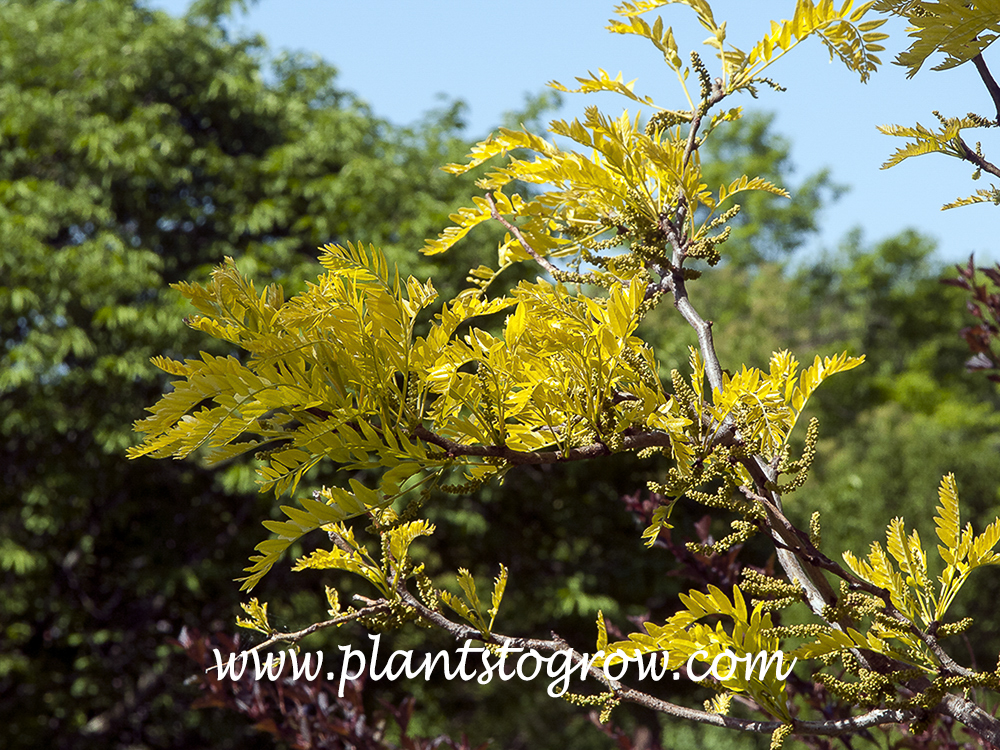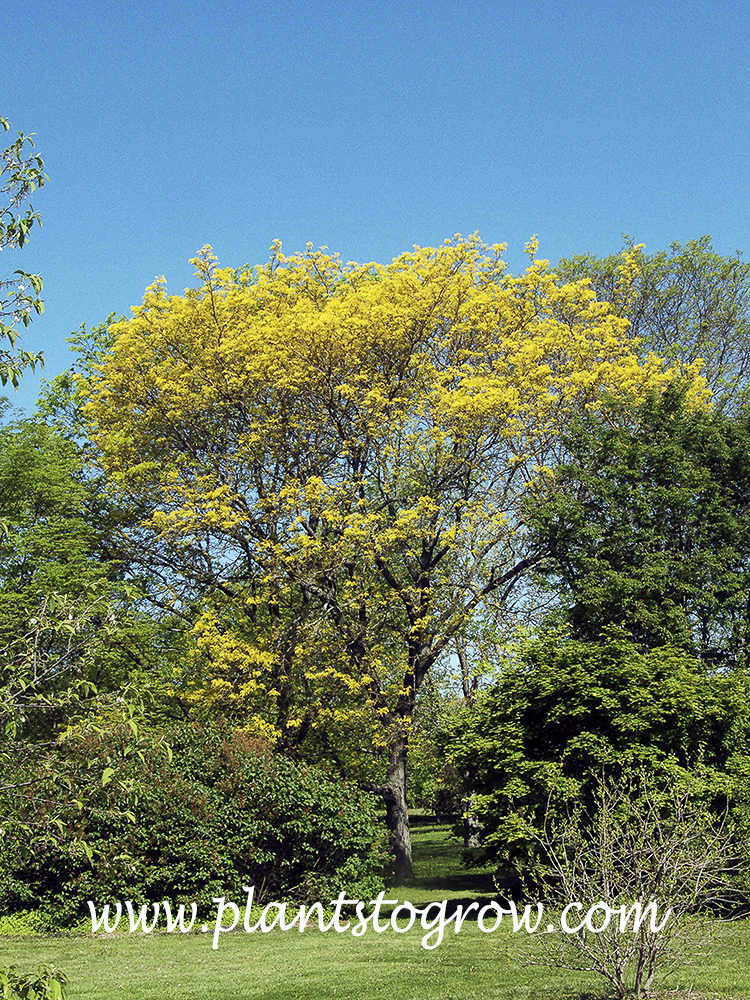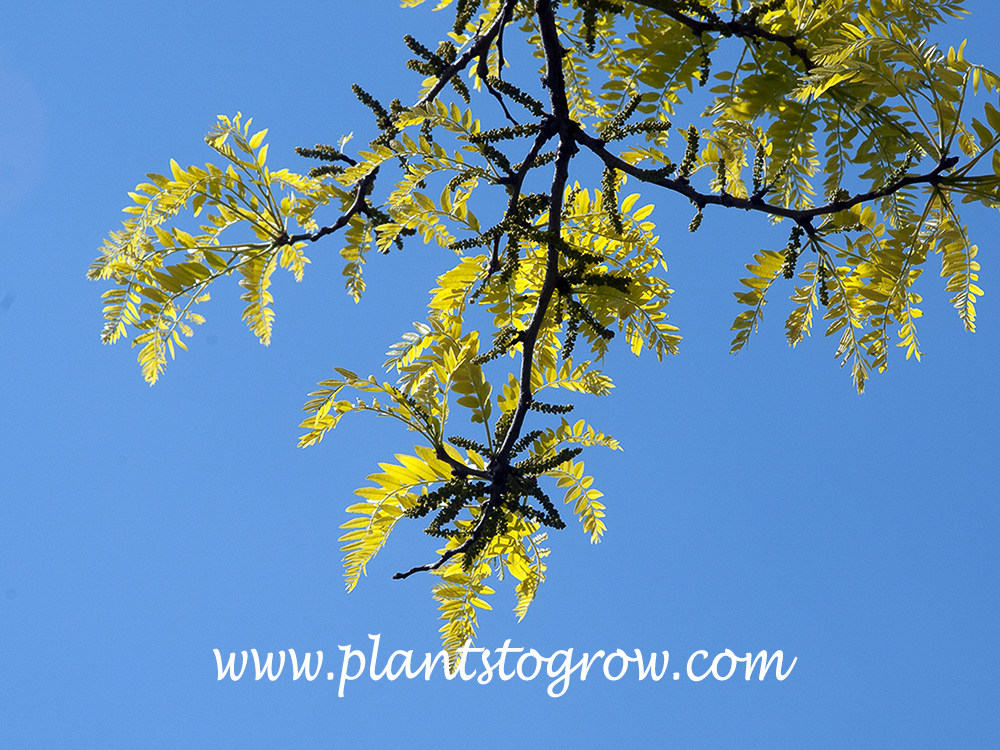| Description | Sunburst Honeylocus (Gleditisia tricanthos) The new foliage turns bright yellow to golden yellow in the spring. It eventually turns to green. |
|---|---|
| Pronunciation | pinnately or bipinnately compound, yellow in spring maturing to green |
| Plant Type | Trees Deciduous |
| Hardiness Zone | 4-9 |
| Sunlight | full |
| Moisture | average |
| Soil & Site | average |
| Temperature | grows best in the cooler end of it's hardiness zone |
| Fruit | fruitless |
| Leaves | pinnately or bipinnately compound, yellow in spring maturing to green, youngest tips may have some yellow throught the year |
| Stems | thornless |
| Dimensions | 30-35 feet, broadly spreading |
| Cultivar Origin | Discovered as a seedling in 1947. Released by the Cole Nursery of Pennsylvania in 1954-55. |
| Misc Facts | One nice thing about Honeylocust is they do not produce deep, heavy shade likes Maples and other trees. |
| Author's Notes | One nice thing about Honeylocust is they do not produce deep, heavy shade likes Maples and other trees. |
| Notes & Reference | #01-Manual of Woody Landscape Plants (Michael Dirr), #93-North American Landscape Trees (Arthur Lee Jacobson), #245-Trees for American Gardens (Donald Wyman) |

Cart




